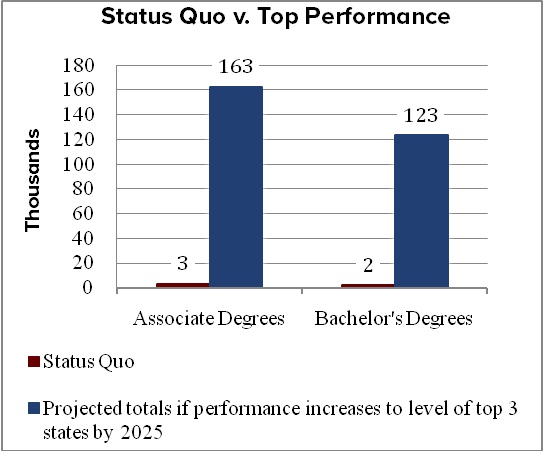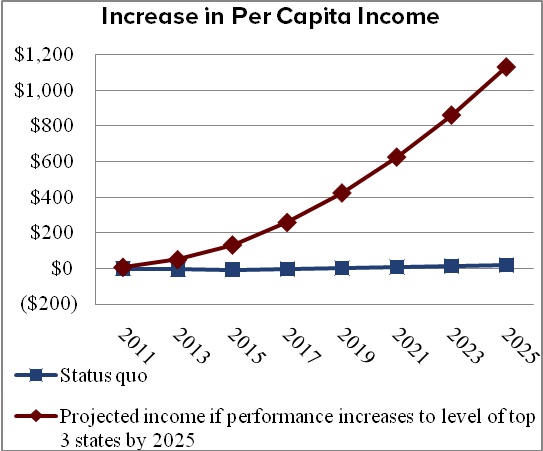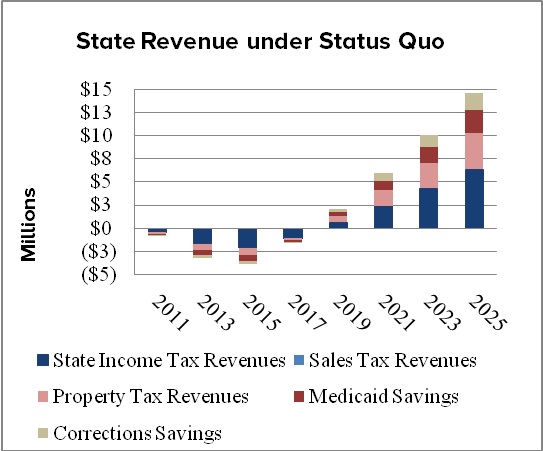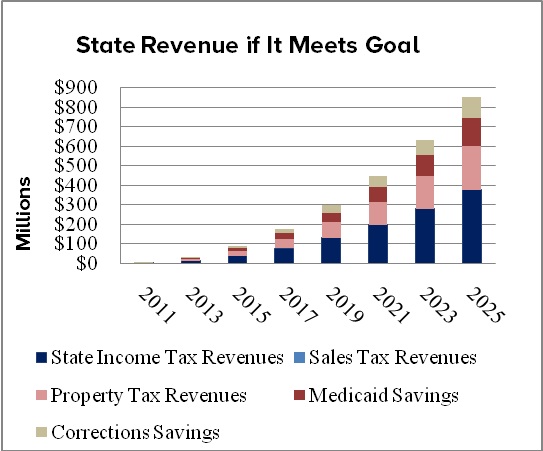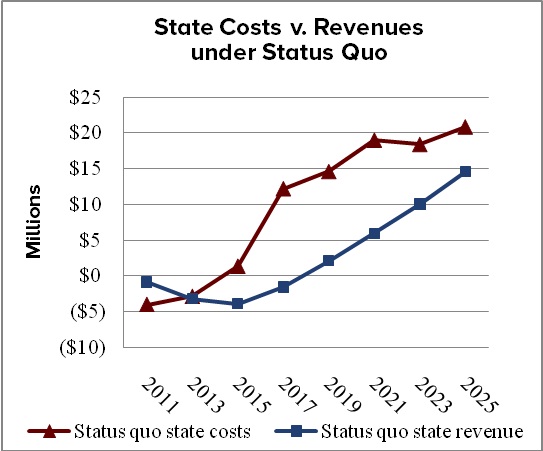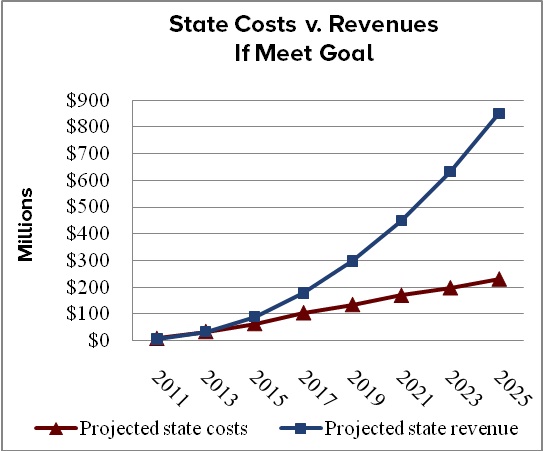Oregon: The Return on Investment to Increasing Postsecondary Credential Attainment
Visit the Oregon Return on Investment dashboard tool >>
(NOTE: Dashboard takes a few seconds to load)
|
Oregon Must Improve College Participation and Credential Attainment Rates to Remain Competitive |
|
|
|
|
Meeting Credential Goal Produces Significant Personal Economic Return |
|
|
Per capita income increases when the state meets 60% credential attainment goal
|
|
|
Meeting Credential Goal Produces Significant Economic Returns to the State |
|
|
Status quo produces small returns Under current postsecondary investment patterns, Oregon’s |
Meeting 60% credential goal pays off By meeting the 60% credential goal, Oregon will generate more annual revenue, topping approximately $850 million in 2025. |
|
State Revenues Exceed Costs When Credential Goal is Met |
|
|
Status Quo: Costs exceed revenues Under current postsecondary investment patterns, Oregon’s postsecondary costs exceed state revenues by about $6
|
Meet 2025 goal: Revenues exceed costs By meeting the 60% credential attainment goal, Oregon’s
|
|
This analysis was prepared using the CLASP-NCHEMS Return on Investment Dashboard tool. See clasp2022.tealmedia.dev/ROIdashboard |
|
